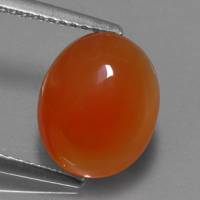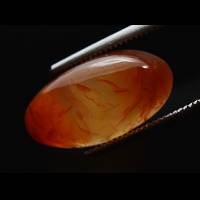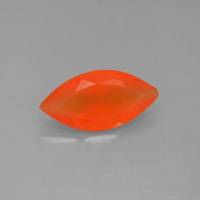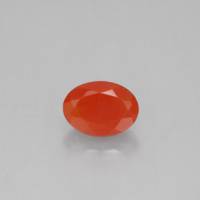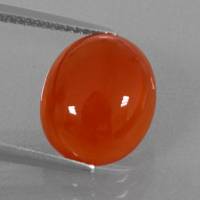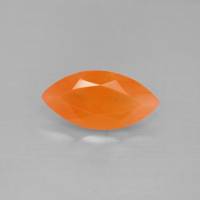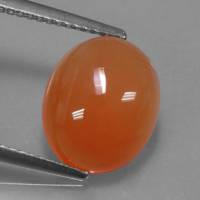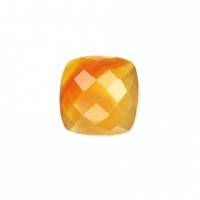Carnelian

Mozambique
3.84 carats
© Brian Kosnar - Mineral Classics
Many stones, which in the natural condition are of a dirty yellow colour and unsuitable for gems, on being heated acquire the fine carnelian colour, and with it a considerable increase in value.
When held against the light, the colour variety shows stripes, natural carnelian shows a cloudy distribution of colour.
Carnelian Gemstones by Colour
This table shows the variety of hues this gemstone can be found in. Click on a photo for more information.
Carnelian Gemstones by Size
This table shows distribution of Carnelian gemstone sizes that are listed on this site. This can give a good indication as to the general availability of this gemstone in different sizes.
Contributed photos
Lightest:0.84 cts
Heaviest:120 cts
Average:11.71 cts
Total photos:46
Do you have a larger Carnelian? Why not upload a photo?
| General Information | ||||||||||||
|---|---|---|---|---|---|---|---|---|---|---|---|---|
| A variety or type of: | Chalcedony, which is a variety of Quartz | |||||||||||
| Other Names/Trade Names: | ||||||||||||
| Chemical Formula |
| |||||||||||
| Carnelian Treatments | ||||||||||||
| The colour can be enhanced by heating. - Gemstones of the world, Walter Schumann, 2001, p 126 | ||||||||||||
| Carnelian Simulants | ||||||||||||
| Most carnelians offered today are agates which are dyed and then heat-treated. - Gemstones of the world, Walter Schumann, 2001, p 126 | ||||||||||||
| Physical Properties of Carnelian | ||||||||||||
| Mohs Hardness | 6.5 to 7, Blue Chart Gem Identification (2010) | |||||||||||
| Specific Gravity | 2.58 to 2.64, Gemstones of the world (2001) More from other references | |||||||||||
| Cleavage Quality | None, Gemstones of the world (2001) | |||||||||||
| Fracture | Uneven, Gemstones of the world (2001) | |||||||||||
| Optical Properties of Carnelian | ||||||||||||
| Refractive Index | 1.535 to 1.539, Blue Chart Gem Identification (2010) | |||||||||||
| Optical Character | Uniaxial/+, Gemmological Tables (2004) | |||||||||||
| Birefringence | 0.003 to 0.009, Blue Chart Gem Identification (2010) | |||||||||||
| Pleochroism | Absent, Gemstones of the world (2001) | |||||||||||
| Dispersion | None, Gemstones of the world (2001) | |||||||||||
| Colour | ||||||||||||
| Colour (General) | Red, orange, reddish, Management Team (2012) | |||||||||||
| Causes of Colour | Orange to red, submicroscopic to microscopic inclusions of hydrous Fe oxides, Pragmatic Spectroscopy For Gemologists (2011) | |||||||||||
| Transparency | Translucent,Opaque, Blue Chart Gem Identification (2010) Semi-transparent to opaque | |||||||||||
| Lustre | Waxy,Resinous, Gemstones (2009) | |||||||||||
| Fluorescence & other light emissions | ||||||||||||
| Fluorescence (General) | Blue-white, Gemstones of the world (2001) | |||||||||||
| Crystallography of Carnelian | ||||||||||||
| Crystal System | Trigonal, Gemmological Tables (2004) | |||||||||||
| Habit | Fibrous to grained aggregate, Gemmological Tables (2004) | |||||||||||
| Further Information | ||||||||||||
| Mineral information: | Carnelian information at mindat.org | |||||||||||
| Significant Gem Localities | ||||||||||||
| ||||||||||||



